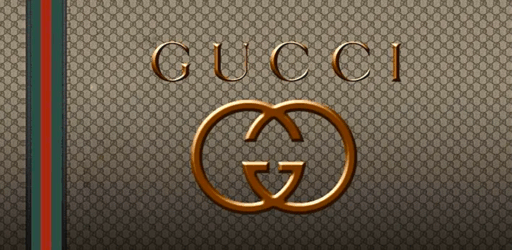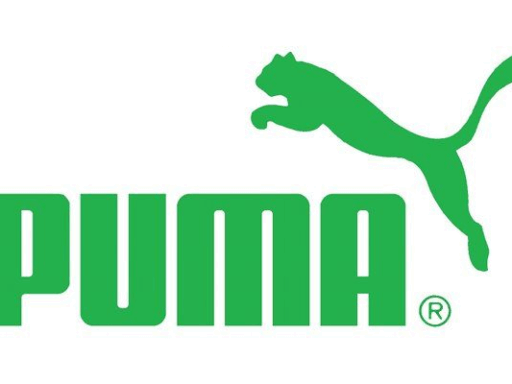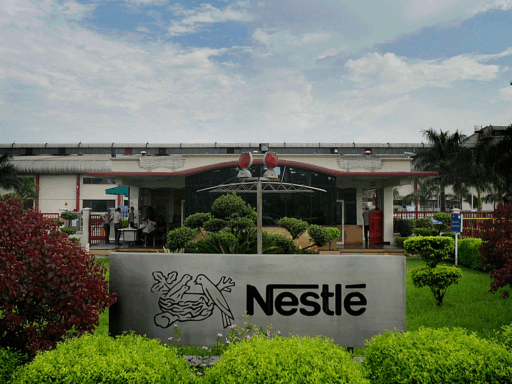Gucci, an iconic luxury fashion brand under the Kering Group, has positioned itself at the forefront of sustainable luxury fashion. With a mission to redefine luxury in a way that aligns with global environmental and social responsibility, Gucci continues to set the pace for sustainability in the fashion industry. Known for its artistry, creativity, and commitment to craftsmanship, Gucci has equally embraced the responsibility of environmental stewardship and social equity.
In 2023, Gucci released its Equilibrium Impact Report, an annual publication that highlights the brand’s sustainability initiatives, goals, and progress. Through its Gucci Equilibrium platform, the brand communicates its commitment to achieving a circular economy, carbon neutrality, and community empowerment, with a strong emphasis on gender equality, ethical supply chains, and climate action. Gucci’s work is crucial in demonstrating how a luxury brand can integrate sustainability into every facet of its operations, from raw material sourcing to design and packaging.
Sustainability Strategy and Goals
Gucci’s sustainability efforts are primarily framed around two pillars:
- People: Empowering communities, promoting gender equality, and ensuring the well-being of everyone within the brand’s ecosystem.
- Planet: Taking action on climate change, transitioning to a circular business model, reducing emissions, and minimizing environmental impact throughout its value chain.
These pillars guide Gucci’s ongoing efforts to integrate sustainability into its business model. Below is an in-depth look at some of the company’s most significant sustainability goals and achievements:
Carbon Neutrality and Emissions Reduction
Gucci is striving to achieve net-zero greenhouse gas (GHG) emissions by 2050. The company has set science-based targets, focusing on a 50% reduction in Scope 1 and 2 emissions by 2030, and 42% reduction in Scope 3 emissions by the same year. Gucci’s Scope 3 emissions are critical in understanding its total environmental impact as they include emissions from its supply chain, manufacturing processes, and the transportation of raw materials.
Key Initiatives:
- Renewable Energy: Gucci achieved 100% renewable energy across all direct operations in 2022, in alignment with RE100. This milestone was achieved through significant investments in solar energy and renewable energy purchases from wind and solar farms.
- Sustainable Fashion Design: Gucci has incorporated low-carbon materials and more energy-efficient production processes across all its collections. This includes transitioning to more sustainable textiles, such as organic cotton, and using recycled materials in manufacturing.
- Transportation: Gucci is also focusing on reducing its transportation emissions by shifting to electric vehicles (EVs) for product deliveries and improving the energy efficiency of its global supply chain operations.
Achievements:
- Carbon Emissions Reduction: Gucci has already reduced Scope 1 and 2 emissions by 78% since 2015. The company has also achieved a 45% reduction in Scope 3 emissions per unit of value since baseline reporting, which is a significant accomplishment for a brand with such a complex supply chain.
- Carbon Offsetting: Gucci compensates for its residual emissions through carbon offset programs, which support renewable energy projects and forestation programs in regions critical to carbon sequestration.
Circular Economy and Sustainable Packaging
Gucci is committed to a circular business model, with a focus on regenerative design, waste reduction, and packaging innovation. As a luxury brand, Gucci’s transition to a circular model is particularly significant, as the fashion industry has long been criticized for its linear consumption patterns and unsustainable waste generation.
Key Initiatives:
- Circular Hub: In 2023, Gucci launched the Circular Hub, a state-of-the-art facility in Italy designed to optimize the use of recycled materials in product production. This facility focuses on circularity, producing items that can be fully recycled at the end of their life cycle. The Circular Hub helps minimize waste by reusing and recycling materials in the manufacturing process.
- Sustainable Materials: Gucci has significantly increased the use of regenerative cotton and recycled polyester in its collections. The brand has partnered with Sulapac, a Finnish start-up, to replace traditional plastic packaging with biodegradable alternatives made from wood and natural materials.
- Recycled Gold: Gucci has committed to sourcing 80% of the gold used in its watches and fine jewelry from recycled materials by 2025, ensuring its precious metals are sustainably sourced and reducing the environmental impact of mining.
Achievements:
- Gucci’s Denim Project, which integrates regenerative cotton and recycled fibers, won the Ellen MacArthur Foundation Award for Circular Economy at the 2023 CNMI Sustainable Fashion Awards, recognizing its leadership in promoting circularity within the fashion sector.
- The brand also achieved a 30% reduction in packaging weight, supporting its goal to reduce the overall environmental impact of its product lines.
Water Stewardship
Water is a critical resource in the fashion and textile industry, and Gucci has implemented several water-saving initiatives across its supply chain.
Key Initiatives:
- Water Efficiency in Manufacturing: Gucci is focusing on water conservation within its own facilities, particularly in regions experiencing water stress. The company has set a target of reducing water consumption by 15% across its manufacturing operations by 2025.
- Regenerative Agriculture: Gucci is working with farmers globally to promote regenerative agriculture practices that use less water and improve soil health. Through partnerships with cotton farmers in Senegal, the brand is encouraging water-efficient farming techniques.
Achievements:
- Gucci has managed to reduce its water usage by 12% in production processes and has successfully implemented water management programs in several high-risk areas.
Human Rights, Diversity, and Social Impact
Gucci integrates human rights and social equity into its sustainability model, ensuring that its operations not only benefit the environment but also have a positive impact on communities.
Key Initiatives:
- Gucci Changemakers: This initiative allows all Gucci employees worldwide to dedicate paid leave to community service, making a positive social impact in their local communities. Gucci is also providing educational opportunities for underrepresented groups through this program.
- Gender Equality: Gucci is deeply committed to gender equality both within its workforce and in the communities it serves. Through the Gucci Equilibrium platform, the brand tracks its efforts to support women’s empowerment, including mentorship and career development initiatives.
- Supply Chain Transparency: Gucci is committed to ensuring that 99% of its raw materials are traceable, adhering to responsible sourcing standards and working with suppliers who meet high social and environmental criteria.
Achievements:
- Gucci’s Changemakers initiative has impacted 9 million women and girls globally, empowering them with access to education, mentorship, and career opportunities in the fashion industry.
Competitor Comparison
Gucci’s sustainability efforts place it ahead of many competitors in the luxury fashion industry. However, the company continues to compete with other major luxury brands like LVMH, Prada, and Chanel on sustainability.
Gucci vs LVMH
- LVMH has ambitious sustainability targets, including a focus on carbon neutrality by 2050 and the use of renewable energy. However, Gucci’s faster pace in achieving 100% renewable energy and its focus on circular design set it apart.
- Gucci’s Denim Project and Circular Hub initiatives also position it as a leader in fashion circularity, surpassing LVMH’s progress in this area.
Gucci vs Prada
- Prada has made strides in using recycled materials and sustainable packaging. However, Gucci has gone further in integrating regenerative cotton and offering sustainable options across both fashion and fine jewelry, such as its commitment to using recycled gold in its watches.
- Gucci’s Changemakers initiative and its broader commitment to gender equality and diversity also set it apart from Prada in terms of social sustainability.
Gucci vs Chanel
- Chanel has committed to net-zero emissions by 2040 and has significantly reduced its carbon footprint through renewable energy. However, Gucci’s circular initiatives (e.g., Denim Project and Circular Hub) and supply chain transparency put it ahead of Chanel in some aspects of sustainability.
- While both brands emphasize responsible sourcing, Gucci’s more transparent approach to tracking raw materials gives it an edge in the luxury sector.
Conclusion
Gucci’s sustainability journey has been marked by bold, innovative steps toward integrating sustainability into every part of its business. The brand’s commitment to circularity, carbon neutrality, renewable energy, and gender equality sets it apart as a leader in the luxury fashion sector. Gucci’s ongoing efforts to improve its supply chain, reduce waste, and protect the environment while promoting social equity position it as an exemplary model for the industry.
As Gucci continues to evolve its sustainability strategy, its leadership in driving positive environmental impact and social equity will undoubtedly inspire other luxury brands to follow suit, ensuring a greener, more equitable future for all.
Sources
- https://equilibrium.gucci.com/renewable-energy/
- https://equilibrium.gucci.com/impact-report-2023/planet/minimizing-impacts-through-action/
- https://equilibrium.gucci.com/impact-report-2023/planet/a-circular-transformation/
- https://equilibrium.gucci.com/impact-report-2023/our-journey/
- https://www.gucci.com/us/en/nst/sustainability-landing
- https://equilibrium.gucci.com/
- https://www.gucci.com/us/en/st/stories/article/gucci-equilibrium-impact-report-2023
- https://www.voguebusiness.com/beauty/why-the-new-gucci-fragrance-is-made-from-recycled-carbon
- https://the-ethos.co/guccis-2023-impact-report/
- https://www.fibre2fashion.com/news/apparel-news/italian-firm-gucci-achieves-78-reduction-in-greenhouse-gas-emissions-296755-newsdetails.htm






